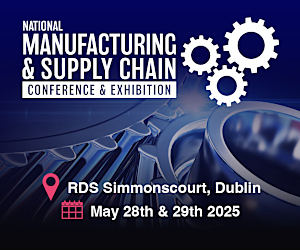Medtech: Supply chains and manufacturing after COVID-19

They are the questions that are being asked everywhere, and life sciences is no exception. What will the world look like post-Coronavirus? Here we consider a couple of factors relating to manufacturing and the supply chain.
There is much talk of the new normal, about how the world will adapt with regards to controlling the spread of COVID-19 until a vaccine or adequate therapies are found before we return to something like the pre-lockdown life. But in some cases, these changes could be long lasting.
With so much technological innovation in the world, medtech is bound to be one of the most affected sectors. While all the focus has been on equipment and materials needed for testing and constructing ventilators to treat patients, technologies such as telemedicine and tracking apps may have had their lasting breakthrough.
In this series of article we have the view of a few medtech firms from different parts of the sector. In this piece we have explored what things will look like in manufacturing and supply chains with the future still relatively unknown – with a second piece to follow on the more digital technologies.
A striking aspect during the crisis has been the amount of companies switching their production process in order to contribute to the frontline. Given the ability of these companies to be able to either produce PPE or manufacture ventilators, is forced diversification is here to stay?
While that may be an option for some manufacturers, Jacqui O’Connor founder and technical director at MedScan 3D in Galway said they don’t plan on printing PPE in the long term having switched their production from 3D printing anatomic models that allow medical device manufacturers to test their innovations. There was a point about business practice to be made, though.
“We’re not going to go down the route of printing PPE, that’s not what we want to do. For us I don’t think it will change but I think there might be a change in how people meet – meeting can take up a lot of time. That side of things might change, and it can save a lot of time for people to do things virtually because it can be done, that’s the main difference I see with us.”
In the UK, as across much of the world, PPE has been an issue they have struggled with. One Panorama documentary by the BBC claimed that a lack of preparation of the PPE stockpile put stress on the supply chain.
Joe Rowan, president and CEO of Junkosha in Europe and the U.S, acknowledged the difficulty of the job that government had, but feels there could be some supply chain lessons to be learnt.
“It has brought to the fore issues in terms of the management of the supply chain. That might be something that I would ask (the government) is that, given some of the difficulties in getting PPE to the front lines in a timely and efficient way, will there be a review to try to learn how the government and NHS bodies might be able to learn from industry in general with some of the supply chain capabilities, and supply chain engineering that we have in industry in general?”
The picture of learning from supply chain’s from industry could be complicated depending on the outcome of trade talks the UK has with the European Union, especially if ‘Just in Time’ which is relied upon by many business is hampered in any way as a result.
Then there’s the new entries into the sector from familiar names. Dyson entered the medical device space after receiving an order for its CoVent ventilator device from the UK government following a collaboration with Cambridge-based TTP, only for them to say it was no longer required. Various manufacturers formed part of the VentilatorChallengeUK – this all followed a call when Matt Hancock called for manufacturers to switch their production to increase ventilator capacity. Ventilators in the UK were developed in such a short space of time – including VelociVent by Cambridge Consultants who developed its device within six weeks.
This involved the government pledging to cover legal costs when it came to the intellectual property or equipment malfunction. During the pandemic there had been an initial fear the bigger manufacturers from outside the medical device sector might infringe on copyright and intellectual property.
At the time Robert Ganpatsingh, a UK intellectual property lawyer at city law firm DMH Stallard, said it would be a brave rights holder who would’ve sued one of the bigger business who had switched its production efforts to ventilators.
“Far better that in the event of any potential accusation of infringement of intellectual property rights, the existing owners can temporarily licence their rights, such as patents, to those manufacturers that have pivoted their operations towards this worthy cause.
“There is also scope for new designs in ventilator technology. Dyson, for example, have designed their own ventilator as has a team of academics. If their new devices are sufficiently original, they will qualify for their own intellectual property rights without infringing existing rights.”
The Mercedes Formula One team also partnered with University College London to develop the CPAP device, while Virgin Orbit also developed a ventilator of their own.
Now more household manufacturing names not necessarily associated with the sector have entered the medical device space, could they be here to stay because of their original product design? It will be one aspect of the sector to keep a very close eye on.
Household names who may have bigger budgets and vast manufacturing facilities could alter the dynamic of the sector if they wanted to enter the device space. What would this mean for the SMEs that operate in the field? Are they likely to be squeezed out by those with deeper pockets and knowledge space? This is certainly one part of the sector to keep a close eye on in the medium term.
Reference: Ian Bolland at www.med-technews.com




























